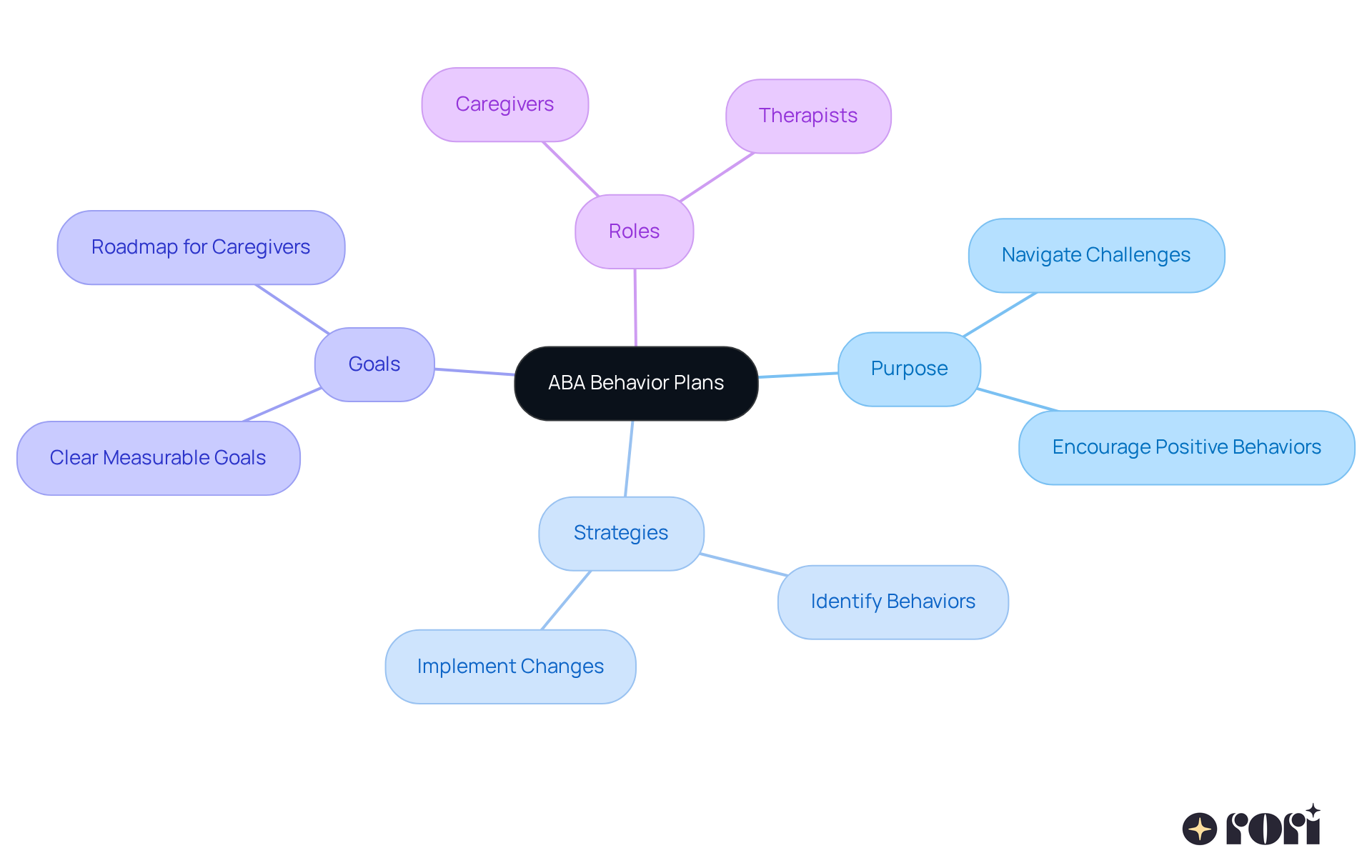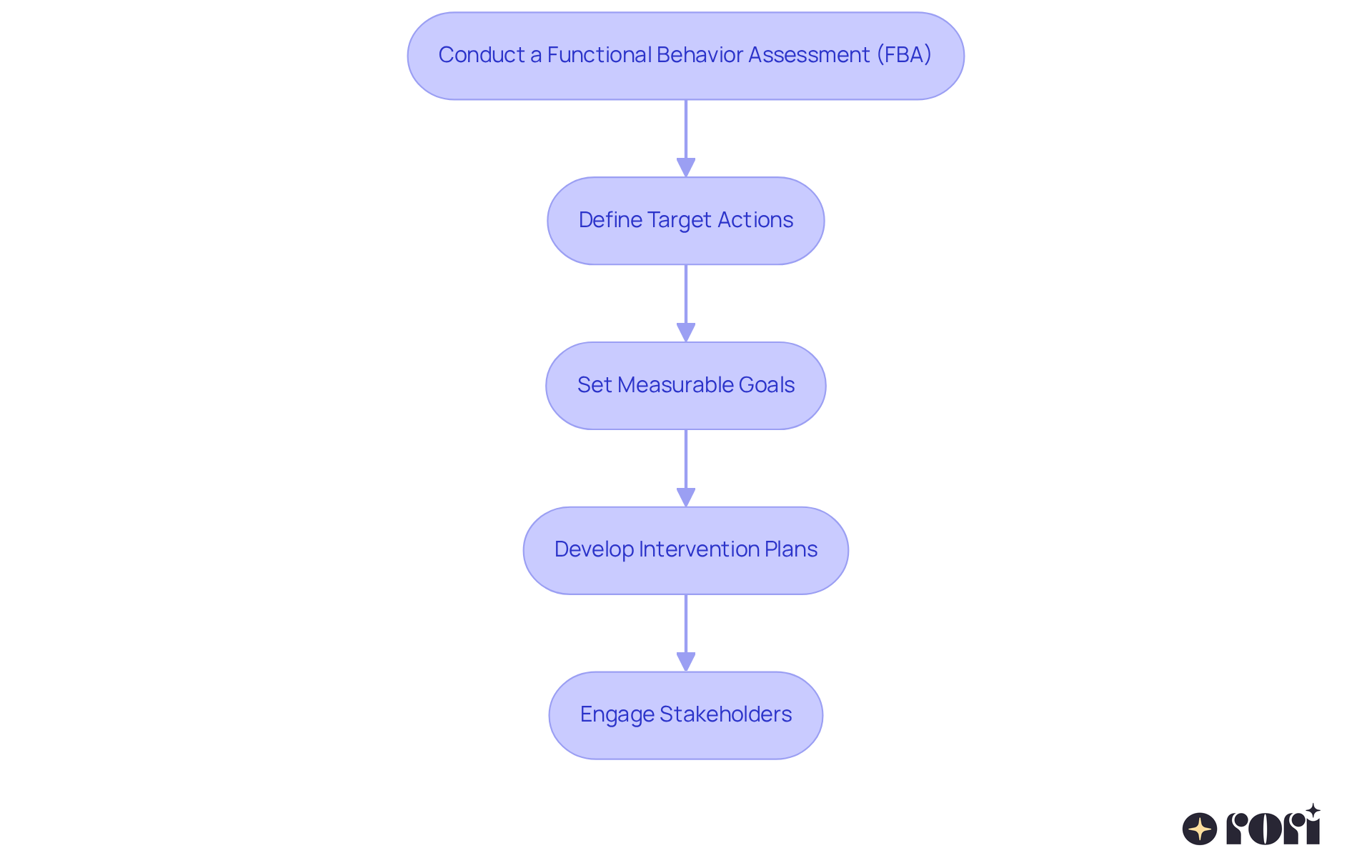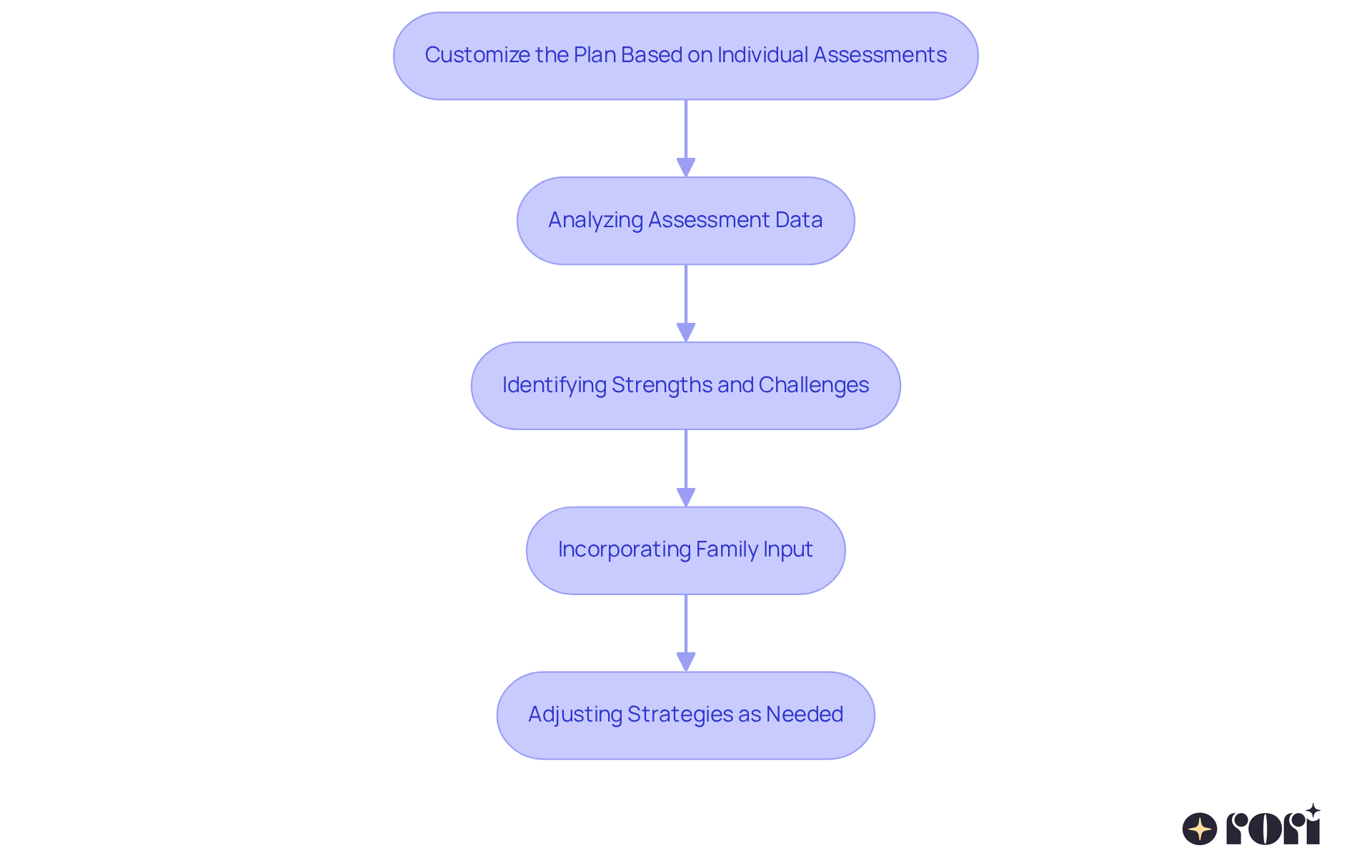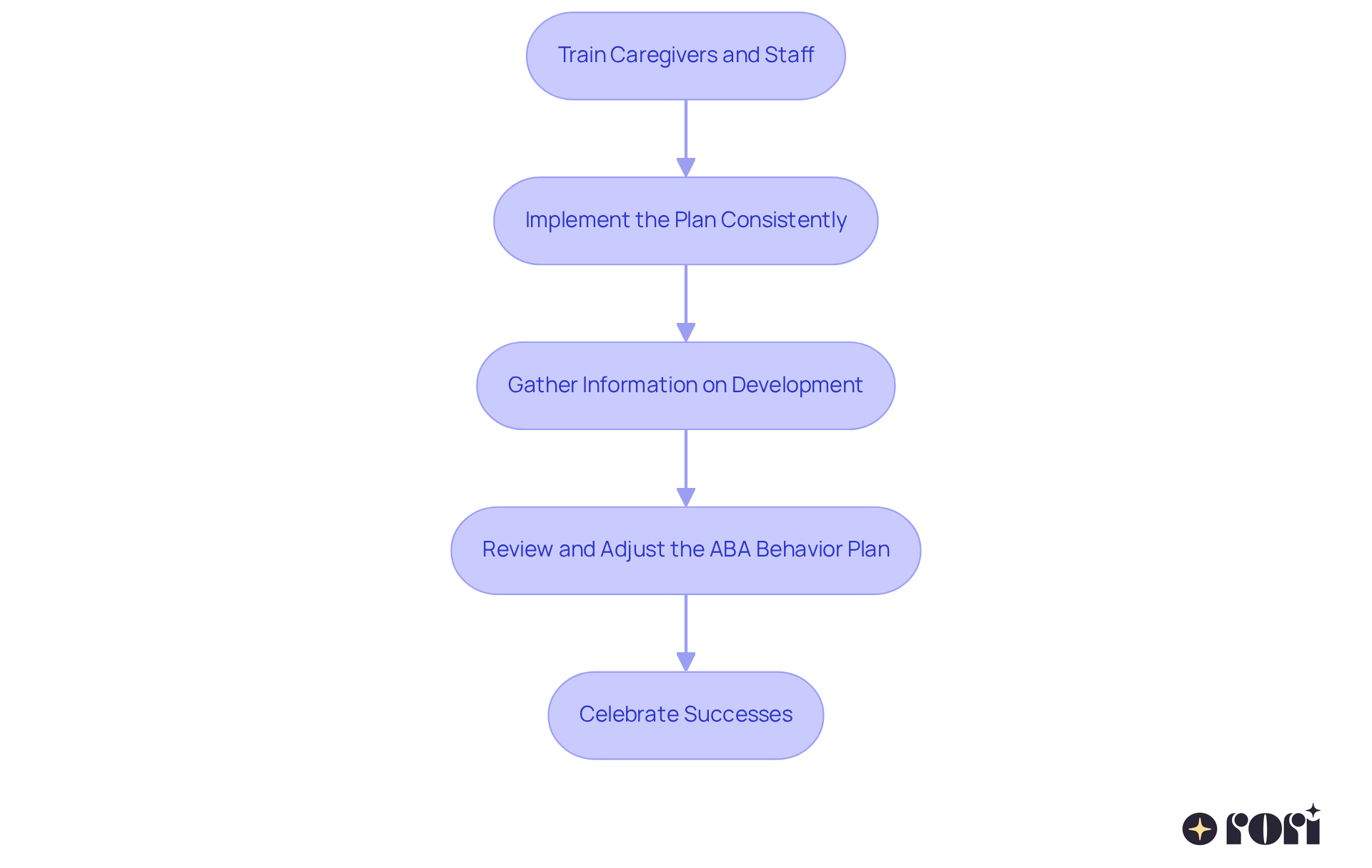Creating an effective ABA behavior plan for your child can feel like a big task, but breaking it down into four simple steps makes it manageable!
It’s important to remember that this plan should be personalized based on your child’s individual assessments. Consistency is key! By sticking to the plan, you can help ensure positive behavioral changes and support your child’s development. So, let’s explore this together and make this journey a little easier for you and your family!
Creating an effective ABA behavior plan is a vital step in supporting children with autism as they navigate their unique challenges. These plans not only serve as a roadmap for caregivers and therapists but also help foster positive behavioral changes through structured strategies and measurable goals. However, developing a tailored plan can feel overwhelming at times. How can caregivers ensure that their approach is both effective and adaptable to their child's evolving needs?
This guide breaks down the essential steps to crafting a successful ABA behavior plan, empowering parents to take an active role in their child's development. Let’s explore this together and make this journey a little easier!
ABA strategies are essential tools designed to help children with autism navigate their unique challenges. These plans focus on identifying tricky behaviors, understanding what drives them, and implementing an aba behavior plan to put effective strategies in place for making positive changes. With clear, measurable goals, the aba behavior plan serves as a roadmap for caregivers and therapists, guiding everyone in encouraging positive behaviors while reducing the negative ones.
This organized approach is super important! Studies show that behavioral challenges are quite common among autistic youth, with many also dealing with conditions like anxiety and ADHD. Understanding the purpose of these strategies allows parents to actively engage in their child's therapeutic journey. It really highlights how crucial consistency is when applying these strategies.
As behavioral therapists often say, a well-structured aba behavior plan not only fosters improvement but also boosts the overall quality of life for individuals on the spectrum. Let’s explore this together! We’re here to help you every step of the way!

Conduct a Functional Behavior Assessment (FBA): Let’s start by gathering information about your child's actions through observations, interviews, and evaluations. This step is key to recognizing what triggers those actions and what functions they serve.
Define Target Actions: Next, let’s clearly identify the specific actions we need to address. Using straightforward language helps describe what these actions look like.
Set Measurable Goals: It’s important to establish clear and measurable objectives for your action plan. These goals should be realistic and achievable, allowing you to track progress. A qualified analyst will help create these objectives, ensuring they are tailored to your child's unique needs, which promotes positive changes and skill development.
Develop Intervention Plans: Now, let’s create specific strategies to address those target actions. This might include evidence-based methods like reinforcement strategies, teaching alternative actions, and adjusting the environment to reduce triggers. Remember, these intervention strategies should be flexible, with ongoing assessments based on progress updates to adapt to your child's growth.
Engage Stakeholders: Finally, it’s crucial to collaborate with educators, therapists, and family members to ensure everyone is on the same page regarding the strategy and its execution. Active involvement from caregivers is essential—research shows that significant progress occurs in 90% of children when the recommended hours are fully implemented. We’re here to help you every step of the way!

To develop an effective aba behavior plan, it’s really important to tailor it based on what you find in the functional assessment. Let’s break it down:
Analyzing Assessment Data: First, take a good look at the information gathered during the FBA. This helps in spotting patterns and triggers linked to the target actions. Our behavior care engine dives deep into functional behavior analysis, ensuring that your assessment is both thorough and data-driven.
Identifying Strengths and Challenges: Next, consider the individual’s strengths, interests, and areas where they might struggle. This insight will guide you in choosing the right aba behavior plan, empowering caregivers to take an active role in their child’s development.
Incorporating Family Input: Don’t forget to engage family members in this process! Their insights can provide valuable context and help ensure that the strategy fits seamlessly into the young one’s daily life and routines. This collaboration not only enhances support but also leads to better behavioral outcomes.
Adjusting Strategies as Needed: Lastly, be open to adjusting your approach based on ongoing observations and feedback. The care engine even generates automatic progress reports for clinician evaluation, allowing for timely tweaks to strategies as your child progresses. Remember, adaptability is key to maintaining the effectiveness of your plan as your child matures.
Let’s explore this together! We're here to help you every step of the way!

Train Caregivers and Staff: It's so important that everyone involved in your child's care understands the strategy and their part in it. If needed, provide some training focused on the ABA behavior plan and its principles and approaches. This way, caregivers can effectively support your child's behavioral goals.
Implement the Plan Consistently: Consistency is key! Make sure the strategies outlined in the ABA behavior plan are applied uniformly across different settings, like home and school. This helps create a stable environment for your child.
Gather Information on Development: Keep track of your child's actions regularly to see how well the strategy is working. You might find it helpful to use tools like activity logs or charts to monitor changes over time.
Review and Adjust the ABA Behavior Plan: Set up regular check-ins to review the ABA behavior plan and assess its effectiveness. Be open to making changes based on the data you gather and the feedback from caregivers and therapists. Flexibility is essential!
Celebrate Successes: Don’t forget to celebrate progress, no matter how small! Recognizing achievements can be a great motivator for both your child and caregivers, encouraging everyone to keep up the good work. Let’s explore this journey together!

Creating an effective ABA behavior plan is a vital step in helping children with autism navigate their unique challenges. By understanding the purpose of these plans, caregivers can actively engage in their child's therapeutic journey, fostering positive behavior changes and enhancing their overall quality of life. This structured approach serves as a comprehensive guide for parents and professionals alike, highlighting the importance of consistency and collaboration.
The article outlines four essential steps:
Each step is crucial in crafting a customized plan that meets the specific needs of the child. Plus, involving stakeholders and adapting strategies based on ongoing assessments ensures that the plan remains effective as the child grows and develops.
In conclusion, the significance of ABA behavior plans is immense. They provide a clear framework for behavior modification, ultimately leading to improved outcomes for children and their families. By embracing this structured approach, caregivers can empower their children to thrive, making a lasting impact on their lives. Taking the initiative to implement and monitor these plans not only benefits the child but also nurtures a supportive community that champions their progress. Let’s explore this journey together!
What is the purpose of ABA behavior plans?
ABA behavior plans are designed to help children with autism by identifying challenging behaviors, understanding their triggers, and implementing effective strategies to promote positive changes.
How do ABA behavior plans benefit children with autism?
These plans serve as a roadmap for caregivers and therapists, helping to encourage positive behaviors while reducing negative ones, ultimately improving the quality of life for individuals on the spectrum.
Why is consistency important in applying ABA strategies?
Consistency is crucial because it enhances the effectiveness of the strategies and supports the child's therapeutic journey, leading to better outcomes in managing behavioral challenges.
What types of challenges do many autistic youth face?
Many autistic youth experience behavioral challenges and may also deal with conditions such as anxiety and ADHD.
How can parents engage in their child's therapeutic journey using ABA behavior plans?
By understanding the purpose of ABA strategies, parents can actively participate in implementing the plans and ensure that consistent methods are applied to support their child's development.